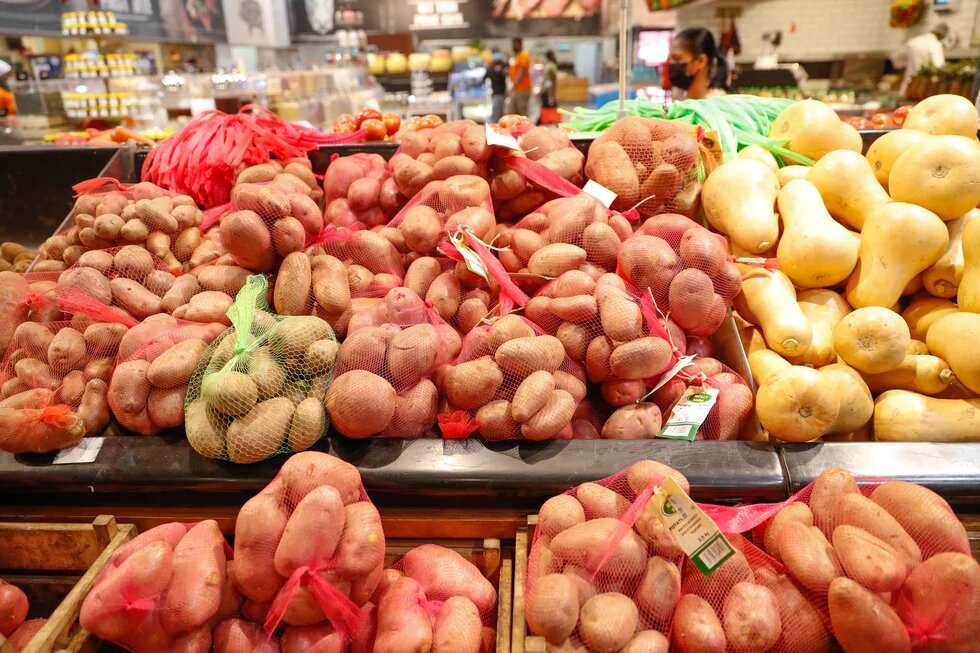Hunger now more than ever seems to result from structural inefficiencies leading to limited access to food, climate change, poverty, and inequalities. Few individuals who dictate technologies, choices, quality, and quantities in food systems and prices undermine progression.

Chronic hunger is no longer headline news. It could be Kenyans are tired of the cyclical playbook year in, year out. Reports of over 2 million people in dire need of food while the Prevalence of Severe Food Insecurity in Kenya is at 25.7 percent of Kenya’s population, according to a recent report by World Food Program.
Hunger now more than ever seems to result from structural inefficiencies leading to limited access to food, climate change, poverty, and inequalities. Few individuals who dictate technologies, choices, quality, and quantities in food systems and prices undermine progression.
With such grim statistics, it is time to rewrite the agriculture playbook to solve the hunger problem. This playbook will have to include relooking at our food systems and the policies that have failed to assure Kenyans the right to safe and nutritious food as per the Constitution of Kenya, Article 43 (c).
Indeed, the reports of more people suffering from hunger and malnutrition in food deficit areas while surpluses are rotting in farms is a complete paradox.
The solution could be in how we are managing our soil, water, and biodiversity, as they are the lifeline promoting food system services. Agricultural practices such as excessive tillage, excessive use of synthetic fertilizers, and pastoralism degrade the available natural resources.
Moreover, policies aiming to improve food, nutrition, and income security still favor large-scale commercial production. This push not only aggravates the situation but also presents new challenges to food sovereignty.
On the other hand, ecological farming combines science and farmers’ technical knowledge to increase productivity, yields and positively affects the environment. The most outstanding value in all this is allowing farmers to develop their farm inputs (manure, compost, biopesticides, and indigenous seeds) that are more resilient in the wake of climate change.
This system is the most dominant and visible and highlights the how and where of food systems’ functionality. It is the center of food system analyses. It sheds light on food value chains, actors, and institutions, i.e., input supply, food production, processing and packaging, distribution, and consumption.
Many aging smallholder farmers characterize Kenya’s agricultural sector, with traditional food systems being predominant. Shrinking land, soil deterioration, and climate change further taint the capacity of the vast agro-ecological landscape to produce food sufficiently.
Improving production and enhancing productivity is possible through agricultural practices that hinge on conservation, restoration, and soil health preservation, promoting food quality. Post-harvest loss management is another way to curb food loss from harvest to markets.
Indeed, the COVID-19 pandemic is a reality check to the fragile food systems of the country, with the mandatory movement restrictions having the most significant impact on Food Systems and Food Security, and nutrition. However, the bigger question is how to make smallholders produce food and nutrition security with dignity. The resilience of agribusinesses and conventional production systems continues to be tested. These results urge us to think of production systems more responsive to “work with nature.”
The Ministry of Agriculture, Livestock, Fisheries, and Cooperatives (MoALFC) now monitors food prices and other food security metrics. It argues that this is to alleviate risks associated with rising food insecurity. The initiative, Food Security War Room (FSWR), gets support from the World Food Programme of the United Nations. With the uptake in digital technology, urban markets could plug into food supply systems through digital marketing avenues.
There is a need to empower rural farmers (producer community) to better leverage agribusiness digitization. The Government’s political roadmap, the Big Four Plan, advocates for industrial agriculture in service of the country’s GDP and export market. The growing consciousness among producers and consumers about the effects of climate change on food security emphasizes the need to establish food systems that are resilient, nutritionally diverse, and grown in a way that supports critical biodiversity and natural ecosystems.
Right to food and agroecology
The right to food encompasses six concepts: food security, availability, access (economic, physical, and social), safety, nutritional value, and sustainability. With women providing over 80% of the labor despite systemic discrepancies such as land ownership and control of the farms, the gender perspective of promoting food security rights for all needs to be addressed through policy and enabling systems for Kenya to be food secure.
In the development of society, food remains fundamental. Agroecology approaches aim at getting resilience in smallholder farming systems. Therefore, agroecology continues to be an option for the steady building of sustainable food systems.
A definition of this approach often follows ten elements. These include responsible governance, diversity, human and social values, knowledge co-creation, efficiency, recycling, resilience, culture and food traditions, synergies, and circular and solidarity economy.
A few proponents are fronting these approaches to solve the present-day challenges of pest, disease, soil, and water management for improved food and nutrition security in Kenya. With the effects of climate change largely felt across Kenya, there is a need for more concrete steps to sustain access to adequate food for all.
However, policies in place are not enabling smallholders (and consumers) to enjoy the full extent of benefits of being stakeholders in the farming system. Equally, the Government is now struggling with food imports, further reducing foreign exchange reserves. Promotions of conventional approaches to production that avail yield increases, with pest and disease control but at the expense of the environmental integrity continue featuring in public discussions. It is time to rewrite the agriculture playbook by elevating the smallholder farmer through sustainable food systems.
This article was written by Noel Templer, member of the Route to Food Alliance and Seed Systems specialist at CIAT. The article was first published on the Route to Food Initiative website.